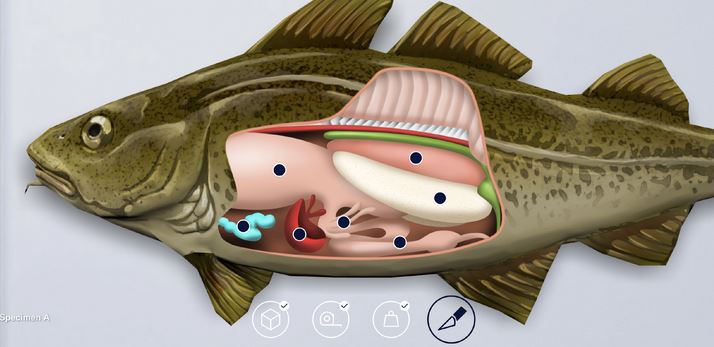Introduction
Are you considering a unique addition to your home. If you’re looking for something beyond the usual furry companions, why not dive into the fascinating world of cod inside as pets.
These aquatic wonders are often overlooked, but they offer a charm all their own. Whether you’re drawn in by their sleek bodies or intriguing behavior, keeping cod can be an enriching experience. This guide will take you through everything you need to know about catching and caring for your very own cod. So grab your fishing gear and get ready your journey into the depths of pet ownership is about to begin.
The History and Popularity of Cod as a Pet
Cod have a fascinating history as pets, tracing back to ancient maritime cultures. Once primarily valued for their culinary qualities, these fish began capturing the attention of aquarists in recent decades.
As aquarium technology advanced, so did interest in keeping cod. Their striking appearance and dynamic swimming patterns make them appealing additions to home tanks.
Popularity surged due to social media showcasing beautiful setups featuring cod alongside colorful corals and plants. Hobbyists share tips on care routines and tank design, fueling enthusiasm among new pet owners.
Interestingly, cod are known for their inquisitive nature. This trait sets them apart from many other fish species. They engage with their surroundings, making them an interactive choice for those looking to enjoy aquatic life at home.
The combination of beauty and personality has solidified the cod’s place in modern aquariums around the world.
The Best Ways to Catch Cod for Pets
Catching cod for your pet can be an exciting adventure. The right techniques will enhance your success rate.
Start by choosing the right location. Cod are often found in deeper waters, especially around rocky structures and drop-offs. Research local fishing spots known for healthy populations.
Using the right bait is crucial. Live bait like herring or mackerel works wonders, but artificial lures can also entice these fish effectively. Experiment with different colors and sizes to see what draws their attention.
Consider using a fishing rod equipped with a sturdy reel. A medium-heavy setup offers better control when reeling in larger cod.
Don’t forget about timing! Early mornings or late evenings are peak feeding times when cod are most active.
Always follow local regulations regarding catch limits and size restrictions to ensure sustainable practices while enjoying this rewarding pastime.

Setting Up the Perfect Tank for Your Cod
Creating the ideal tank for your cod is essential. Start with a spacious aquarium; at least 50 gallons is recommended to allow them room to swim.
Aim for a temperature between 55°F and 65°F, with stable pH levels around 7.5. Regular testing will help keep conditions optimal.
Include plenty of hiding spots using rocks and plants. Cod are shy by nature, so providing cover reduces stress.
Filtration systems should be robust, as cod produce significant waste. A strong filter keeps the water clean and clear.
Consider tank mates carefully. Avoid overly aggressive species that may disturb your cod’s peace or compete for resources they need to thrive.
Caring for Your Cod | Diet, Exercise, and Health Needs
Caring for your cod requires attention to their specific dietary needs. They thrive on a varied diet that includes high-quality pellets, frozen foods like shrimp, and occasional live feedings. This mix provides essential nutrients and keeps them active.
Exercise is equally important for these fish. A spacious tank allows them to swim freely, promoting good health. Adding plants or decorations can encourage natural behaviors and keep your cod engaged.
Monitoring water quality is crucial too. Regular testing ensures levels of ammonia, nitrites, and nitrates remain safe. Keeping the temperature stable also contributes to their overall well-being.
Watch for signs of stress or illness: lethargy, loss of appetite, or unusual swimming patterns may indicate something’s wrong. Early intervention can make a significant difference in your pet’s health journey while keeping them happy and vibrant in their environment.
Common Misconceptions about Keeping Cod as Pets
Many people believe that keeping cod as pets is only for experienced aquarists. This isn’t entirely true. With proper guidance, anyone can enjoy the beauty of these fish.
Another misconception is that cod require vast tanks due to their size in the wild. While they do grow large, juvenile cod can thrive in appropriately sized aquariums until they reach maturity.
Some also assume that cod are low-maintenance pets. In reality, they have specific care needs including water quality and diet considerations. Ignoring these details can lead to health issues.
Many think all fish species are suitable tank mates for cod. However, due to their predatory nature, careful selection of tank companions is essential for a harmonious aquarium environment.
Conclusion:
Before deciding, consider your commitment level. Code inside require specific tank setups and care routines to thrive. If you’re willing to invest time in learning about their needs, you’ll find the reward is worth the effort.
Think also about space. A proper tank not only enhances their environment but allows you to enjoy watching them grow and flourish.
Additionally, research local regulations regarding keeping cod as pets. Some states have restrictions that may affect your ability to keep this species at home.
If you’re ready for the adventure of owning a cod and all that entails then they could be the perfect companion for you.
